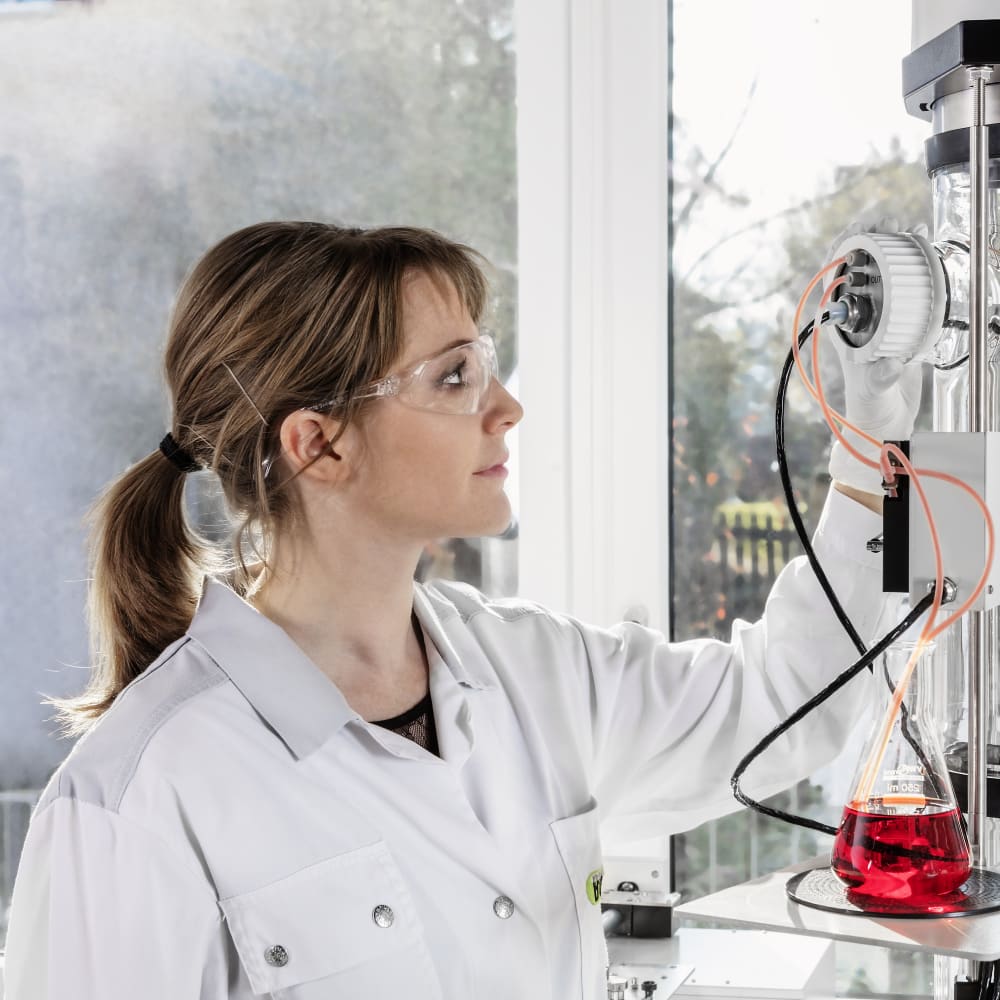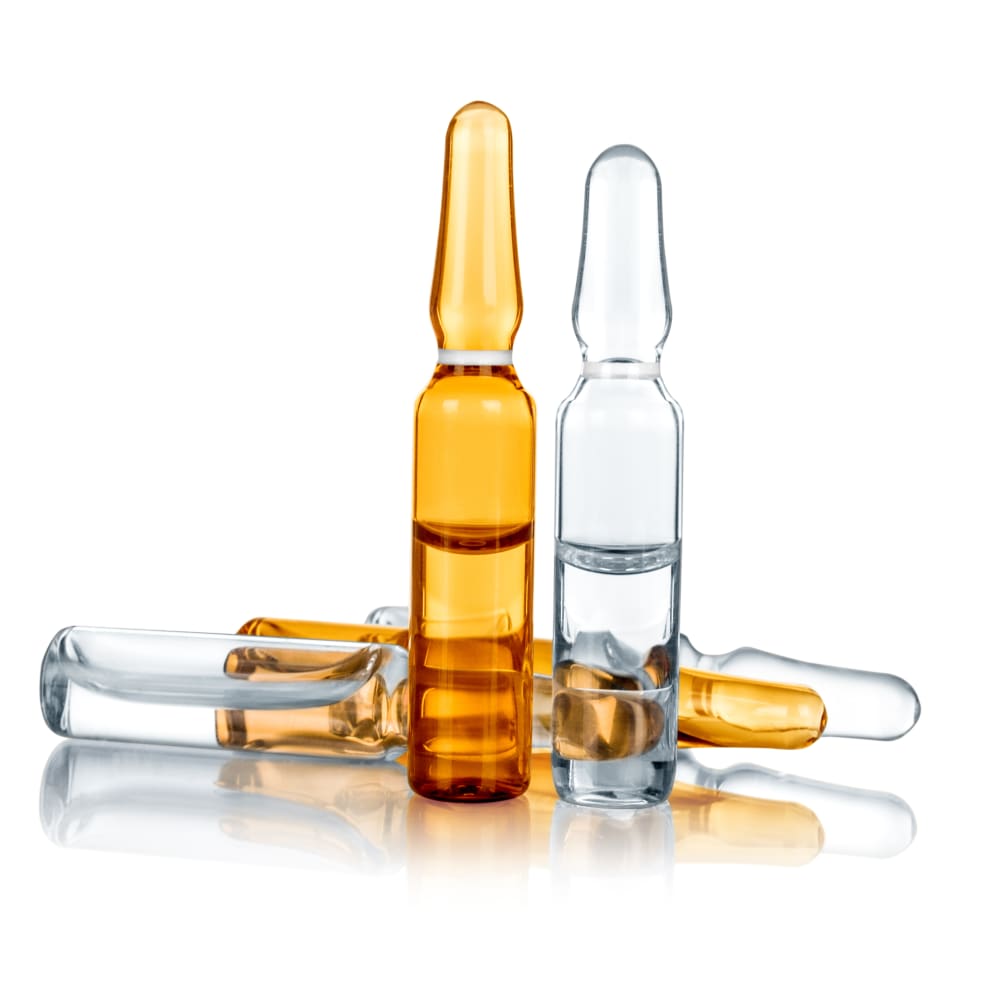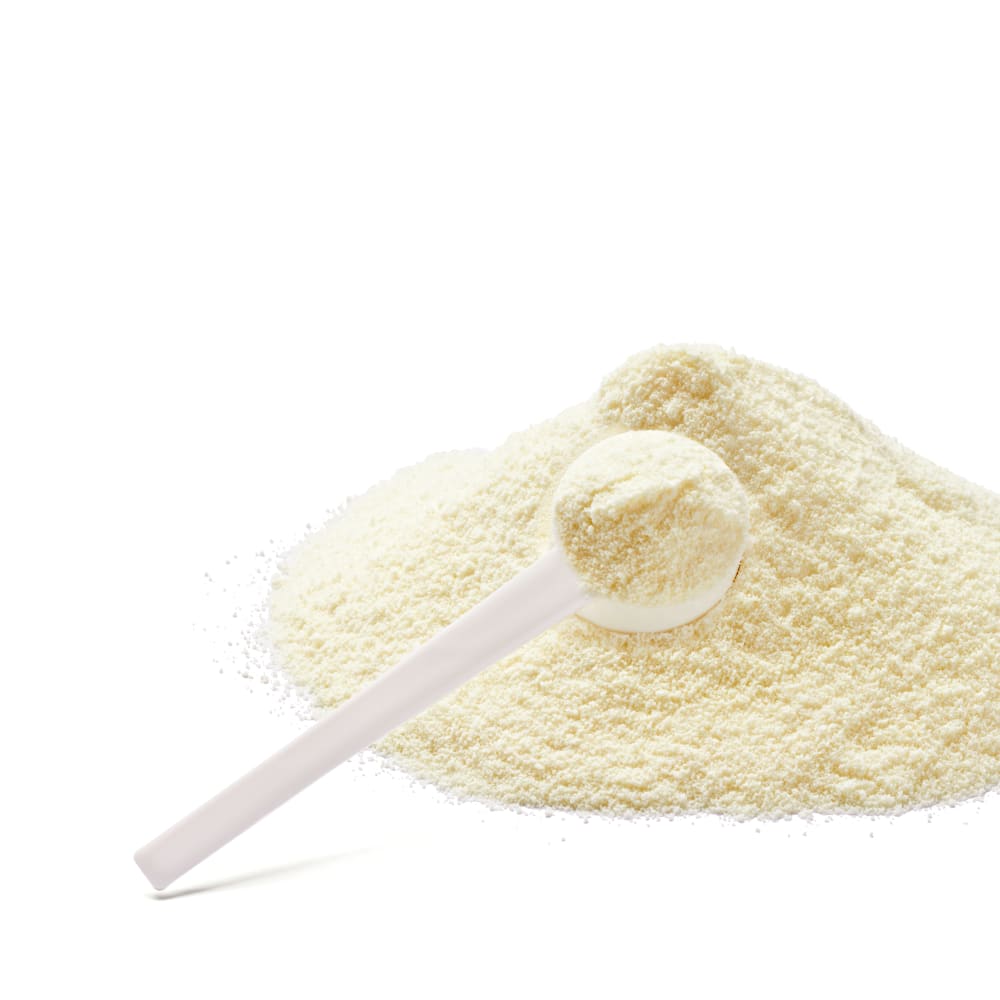Spray Drying of Cefotaxime sodium
Spray Drying of Cefotaxime sodium with the Mini Spray Dryer B-290

Cefotaxime sodium is a broad-spectrum antibiotic commonly used in the pharmaceutical industry for the treatment of bacterial infections. Spray drying is a technique that has been investigated for the production of cefotaxime sodium powder, offering several advantages such as improved stability, solubility, and ease of handling.
The areas of focus in spray drying of cefotaxime sodium include optimizing the process parameters, such as the inlet and outlet temperatures, atomizer type, and feed rate, to achieve the desired particle size, morphology, and drug release properties. Additionally, research has been conducted to evaluate the impact of different excipients and formulation additives on the physical and chemical properties of the powder, such as its flowability, reconstitution characteristics, and stability.
Moreover, spray drying has beePlease see the application note for starting paramters, formulations and some results.n explored as a method for producing cefotaxime sodium-loaded microspheres or nanoparticles, which can improve the drug's bioavailability and sustained release properties. These formulations can enhance the efficacy of cefotaxime sodium and reduce dosing frequency. Spray drying of cefotaxime sodium offers a promising approach for improving the formulation and delivery of this antibiotic for various therapeutic applications in the medical field.
Please see the application note for starting paramters, formulations and some results.
Registration für Download
Weitere Instrumente
Ähnliche Applikationen
Graphen-basierte Verbundwerkstoffe für Lithiumbatterien durch Sprühtrocknung
Verbundwerkstoffe auf Graphen-Basis können verwendet werden, um die elektrische Leitfähigkeit und das Zyklusverhalten von Lithiumbatterien (LIB) zu verbessern. In diesem Whitepaper erfahren Sie mehr über die erforderlichen Schritte, um mithilfe der Sprühtrocknungstechnik Verbundwerkstoffe auf Graphen-Basis zu erhalten. Erfahren Sie, wie Graphen-basierte Verbundwerkstoffe synthetisiert werden, lernen Sie mehr über die Funktion verschiedener Graphen-Pulver in der Forschung und Entwicklung von Batterien sowie über die Prozessparameter für die Sprühtrocknung verschiedener Graphen-basierter Materialien.

Cosmetics Lab, Teil 2
Erfahren Sie in der 2. Ausgabe von «COSMETICS LAB», wie aus natürlichen Rohstoffen Wirkstoffe entstehen. Profitieren Sie von nützlichen Informationen über Techniken, die in der Kosmetikentwicklung eingesetzt werden. Lernen Sie, wie man Wirkstoffe identifiziert und extrahiert, und wie die Chromatographie zur Reinigung von Rohstoffen genutzt wird. Darüber hinaus bieten wir Ihnen unterhaltsame Fakten, Horoskope, Quizfragen und ein exklusives Interview zur Bekämpfung von Fehlinformationen in der Kosmetikindustrie.

Formulierungstipps für Proben mit Cannabisöl
Mit diesem kostenlosen Whitepaper erhalten Sie nützliche Einblicke in die Sprühtrocknung und Verkapselung, zwei gängige Techniken zur Formulierung von Cannabinoiden. Ausserdem erfahren Sie, warum Cannabinoide in Pulverform benötigt werden.
Nutzen Sie den Leitfaden, um auf einfache Weise eine marktfähige Form von Cannabinoiden herzustellen.
Cosmetics Lab, Teil 3
In der 3. Ausgabe von «COSMETICS LAB» finden Sie alles über die Herstellung von Make-up. Verbessern Sie Ihre Kenntnisse über Formulierung durch aufschlussreiche Informationen über Mikroverkapselung und Sprühtrocknung. Erhalten Sie ausserdem Tipps zur Formulierung von Kosmetika, sowie Rezepte, Quizfragen, Horoskope und lesen Sie ein exklusives Interview mit einem Experten für Mikroverkapselung.








